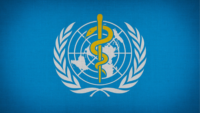UK FSA Publishes Preliminary Foodborne Disease Burden Estimates for Four Pathogens

Image credit: Buddha Elemental 3D via Unsplash
The UK Food Standards Agency (FSA) recently conducted a study to inform burden estimates for four foodborne pathogens: enteropathogenic Escherichia coli (EPEC), sapovirus, hepatitis A virus, and Toxoplasma gondii.
The study is part of the UK’s third Intestinal Infectious Disease Survey (IID3), which aims to describe the number of cases, general practice presentations, and hospitalizations caused by foodborne transmission of the selected pathogens, including data for September 2023–August 2025. A systematic literature review was conducted to make the foodborne disease attribution estimates; the present study pilots the review methodology and makes recommendations for this work for the remaining pathogens within IID3. The review included a total of 13 studies, which were included based on the criteria that they contained data on the percentage of disease attributable to individual transmission pathways, and were published after 2012.
Analysis of the literature suggested that the percentage of total infections attributable to foods for each of the pathogens were: 64 percent for EPEC, 10–42 percent for hepatitis A, 13–16.3 percent for sapovirus, and 28–61 percent for T. gondii. As only one study was recovered for EPEC, results for grouped diarrheagenic E. coli (DEC) pathotypes, not including Shiga toxin-producing E. coli (STEC), were also included, suggesting that 25–55 percent of DEC disease could be attributed to foods.
Some studies contained data that attributed foodborne infections to specific commodity groups. Based on those studies, fresh produce was the most common foodborne transmission pathway for hepatitis A (45–95.4 percent) and sapovirus (58.3 percent). Pork was found to be the most significant foodborne vehicle for T. gondii infection (20–41 percent).
Although high variability was observed in the results reported by different studies, especially for T. gondii and hepatitis A, FSA determined the estimates to be useful for their calculation of the burden of foodborne infectious intestinal disease in the UK.
Based on the pilot review study, FSA made several recommendations for the continuation of this work for the remaining pathogens in IID3, including the inclusion of DEC as its own, separate search category, given the low number of studies on EPEC. This may encompass more studies than individual E. coli pathotypes and so provide more reliable source attribution estimates.
Looking for a reprint of this article?
From high-res PDFs to custom plaques, order your copy today!





